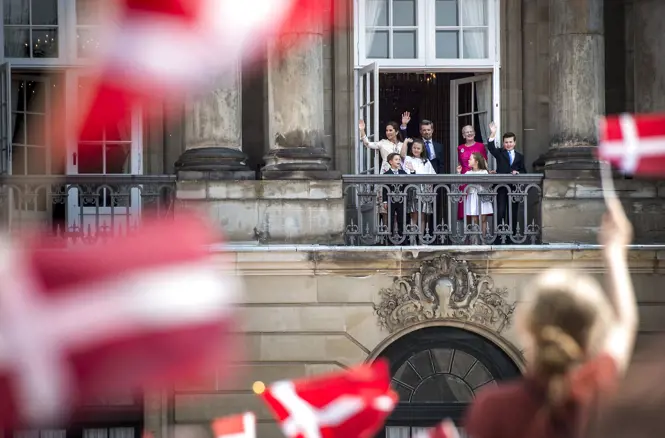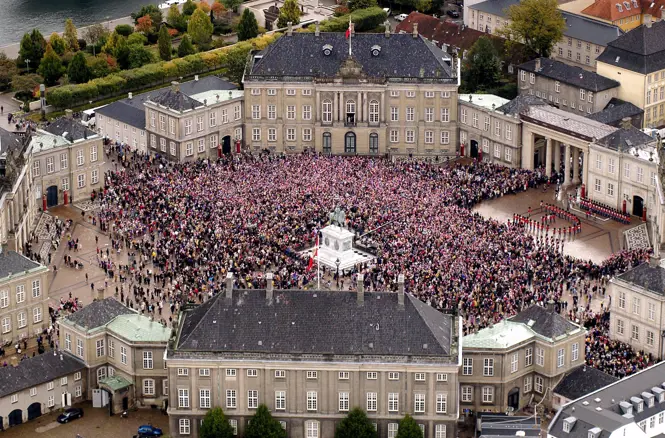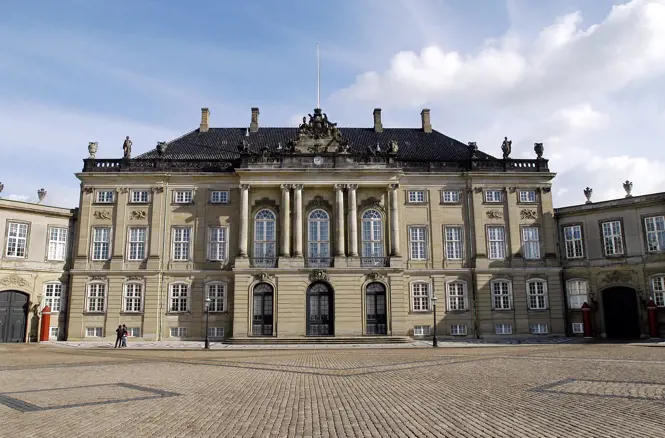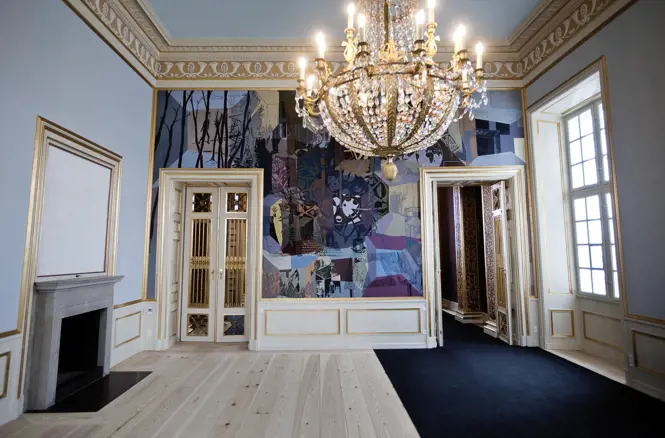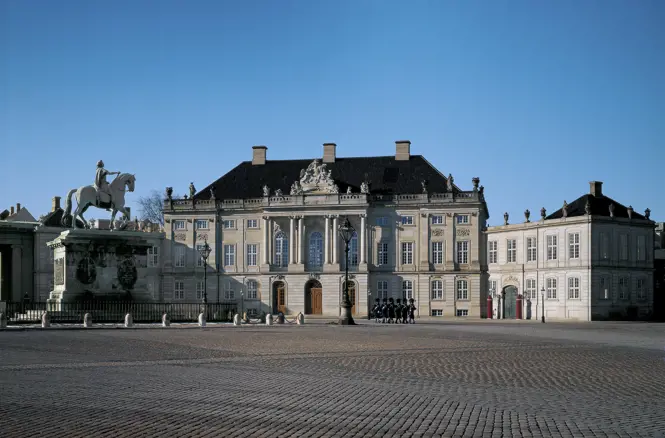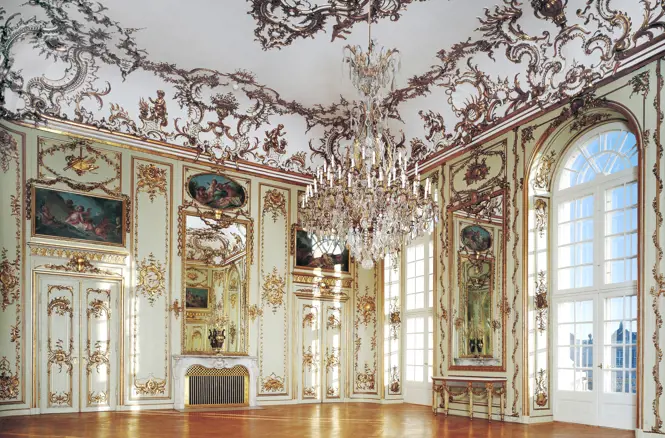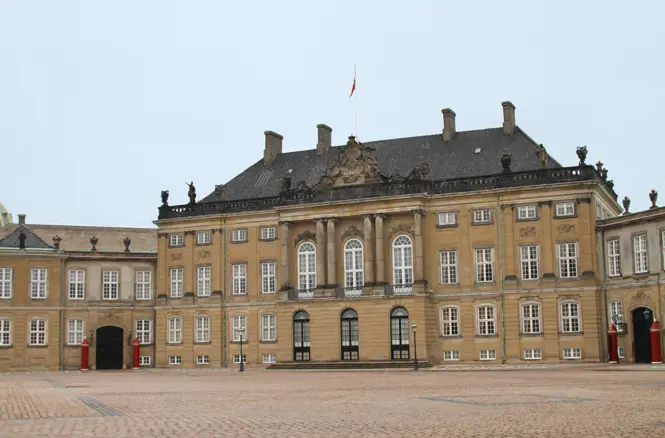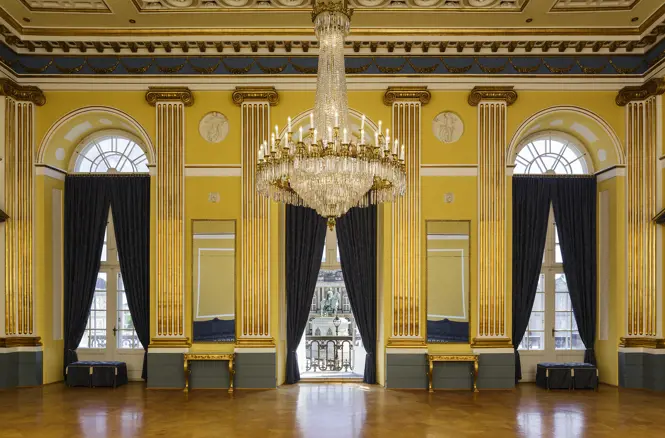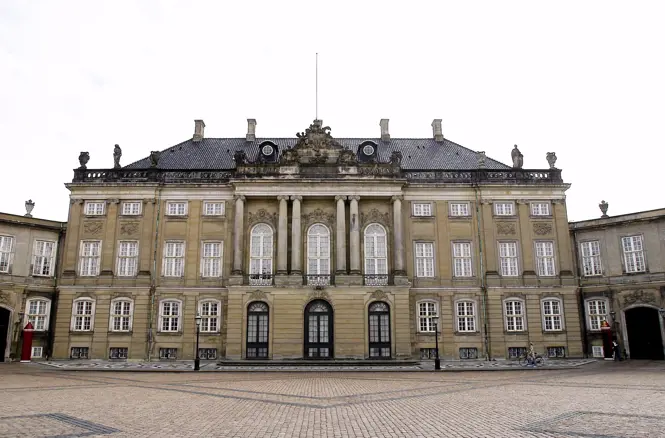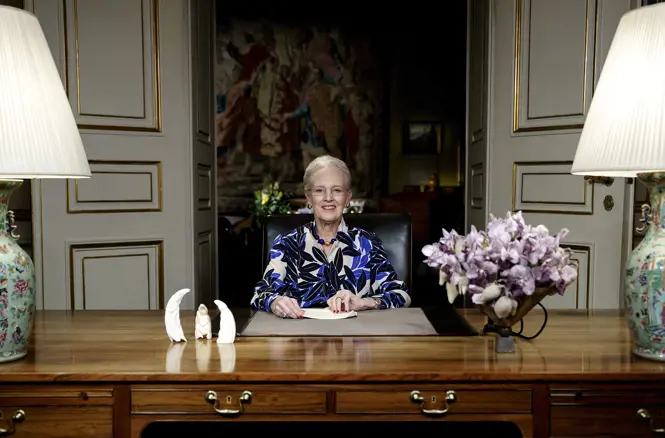The palace was built for Levetzau. Today the palace is residence for HRH Prince Joachim, HRH Princess Marie and HRH Princess Benedikte.
Christian VIII’s Palace, or Levetzau’s Palace, was built in the period 1750-60 for Privy Councillor Christian Frederik Levetzau. Prince Frederik, the Heir Presumptive, bought the palace in 1794 and gave the painter and architect Nicolai Abildgaard responsibility for a modernisation. When the Heir Presumptive died in 1805, his son Prince Christian took over both the palace and the architect. However, Abildgaard died in 1809, and the modernisation came to a halt. In 1839, Prince Christian became King under the name of Christian VIII, and the palace was subsequently called Christian VIII’s Palace.
The King died in 1848 and the Queen Dowager, Caroline Amalie, in 1881. From 1885, the Ministry of Foreign Affairs used parts of the palace but had to move when the it was made the residence of Crown Prince Christian (X) and Princess Alexandrine in 1898.
Ater the death of Christian X in 1947, the palace was placed at the disposal of the Heir Presumptive, Prince Knud.
In the 1980s, the Agency for Palaces and Cultural Properties initiated a much-needed general restoration of the palace. It was fitted up to house, among other things, the residence and reception rooms of the heir to the throne, stores for HM The King’s Reference Library and a museum for the Royal House of Glücksborg, "The Royal Danish Collections, Amalienborg".

